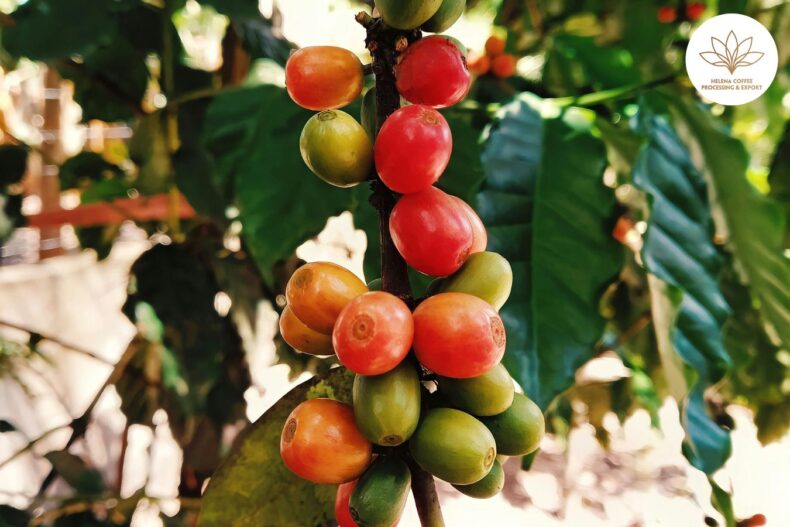
Ethiopia coffee beans are renowned in the coffee industry for their unique flavor profile, aroma, and high quality. As the birthplace of coffee, Ethiopia has a rich history of producing and exporting coffee beans for centuries.
In this article, we will explore the different types of Ethiopia coffee beans, their characteristics, how to brew them, their sustainability, famous brands, and buying and storing tips.
Introduction
Coffee lovers worldwide know that Ethiopia is one of the top coffee-producing countries in the world. The lush green highlands of Ethiopia are home to some of the best coffee beans in the world. Ethiopia coffee beans are famous for their unique taste and aroma.
The history of coffee cultivation in Ethiopia dates back to the 9th century, making it the birthplace of coffee. In this article, we will explore the fascinating journey of Ethiopia coffee beans, from the lush highlands of Ethiopia to your cup.
History of Ethiopia Coffee Beans
The history of Ethiopia coffee beans can be traced back to the 9th century when it was discovered in the region of Kaffa. It is said that a goat herder named Kaldi discovered the magical properties of coffee beans when he noticed that his goats were unusually energetic after eating the coffee berries. This discovery led to the cultivation of coffee in Ethiopia.
In the 16th century, coffee cultivation spread from Ethiopia to Yemen and other parts of the world. Today, Ethiopia is one of the largest coffee producers in the world, accounting for 3% of the world’s coffee production.
The Unique Flavor of Ethiopia Coffee Beans
Ethiopia coffee beans are known for their unique flavor and aroma. The taste of Ethiopia coffee beans is described as fruity, with notes of blueberry, lemon, and chocolate. This flavor results from the unique growing conditions in Ethiopia, where the coffee beans are grown at high altitudes in rich volcanic soil.
The Journey of Ethiopia Coffee Beans
The journey of Ethiopia coffee beans from the lush green highlands of Ethiopia to your cup is fascinating. Here’s a step-by-step guide to the journey of Ethiopia coffee beans:
- Harvesting: The coffee beans are harvested by hand from the coffee trees in Ethiopia. This labor-intensive process requires skilled workers to pick only the ripest coffee cherries.
- Sorting and grading: After drying, the coffee beans are sorted and graded based on size, color, and quality. This is essential in ensuring that only the best quality coffee beans make it to market.
- Exporting: The coffee beans are then exported to other countries, roasted, and sold to coffee lovers worldwide.
- Roasting: Roasting is an essential step in the coffee-making process. It is during the roasting process that the unique flavor and aroma of the coffee beans are developed. Ethiopia coffee beans are typically roasted to a medium to dark roast to bring out their unique flavor.
- Brewing: Finally, the coffee beans are brewed to make a delicious cup of coffee. Ethiopia coffee beans can be brewed using various methods, including drip coffee, French press, and espresso.
- Processing: After harvesting, the coffee cherries are processed to remove the outer layer of the fruit. There are two methods of coffee bean processing in Ethiopia – the dry and the wet processes:
- Dry process: In this method, the coffee cherries are spread out in the sun to dry. This process can take up to two weeks, and the coffee beans are turned regularly to ensure even drying.
- Wet process: In this method, the coffee cherries are washed and then soaked in water to remove the outer layer of the fruit. The coffee beans are then dried either in the sun or using a mechanical dryer.
Types of Ethiopia Coffee Beans
There are three main types of Ethiopia coffee beans: Harar, Yirgacheffe, and Sidamo. Harrar coffee beans are grown in eastern Ethiopia and are known for their winey and fruity taste.
Yirgacheffe coffee beans come from the Sidamo region and are characterized by their floral aroma, lemony acidity, and medium body. On the other hand, Sidamo coffee beans are grown in southern Ethiopia and have a whole body, low acidity, and earthy taste.
Ethiopia Coffee Bean Characteristics
Ethiopia coffee beans are known for their unique flavor profile, which is often described as fruity, floral, and spicy. They also have a distinct aroma that is floral and sweet. In terms of acidity, Ethiopia coffee beans tend to have a bright and lively acidity, which is balanced by their medium to the whole body.
How to Brew Ethiopia Coffee Beans
Using the correct brewing method and techniques is essential to make the most out of Ethiopia coffee beans. The ideal grind size for Ethiopia coffee beans is medium-fine, and the recommended brewing methods are pour-over, drip, and French press.
The water temperature should be between 195-205°F, and the brewing time should be around 3-4 minutes.
Sustainability of Ethiopia Coffee Beans
Ethiopia coffee beans are grown in diverse ecosystems that support high levels of biodiversity. However, coffee farming can have negative environmental and social impacts. Some Ethiopian coffee bean farmers have implemented sustainable farming practices and obtained organic and fair trade certifications to address these issues.
Popular Ethiopia Coffee Bean Brands
Jimma Coffee
Jimma Coffee is a famous Ethiopia coffee bean brand established in 2002. The brand is known for its high-quality coffee beans sourced from the Jimma region in western Ethiopia. The coffee beans are grown in the shade of native trees, which helps to preserve biodiversity and promote sustainable farming practices.
Oromia Coffee
Oromia Coffee is another famous Ethiopia coffee bean brand that is known for its high-quality coffee beans and sustainable practices. The Oromia Coffee Farmers Cooperative Union owns the brand, a cooperative of over 200,000 coffee farmers in Ethiopia.
The coffee beans are grown using organic and fair trade practices, which helps to support the local economy and reduce the negative environmental and social impacts of coffee farming.
Yirgacheffe Coffee Farmers Cooperatives Union (YCFCU)
Yirgacheffe Coffee Farmers Cooperatives Union (YCFCU) is a cooperative of over 40,000 coffee farmers in the Yirgacheffe region of Ethiopia. The cooperative is known for its high-quality coffee beans grown using sustainable and organic practices. YCFCU also works to promote gender equality and empower women in the coffee industry.
These popular Ethiopia coffee bean brands are known for their high-quality coffee beans and commitment to sustainability. By purchasing coffee beans from these brands, consumers can support sustainable coffee farming practices and help reduce coffee production’s negative environmental and social impacts.
Conclusion
In summary, Ethiopia’s coffee beans are unique and highly regarded in the coffee industry. Their distinct flavor profile, aroma, and characteristics make them a favorite among coffee enthusiasts. Ethiopia coffee bean farmers have also implemented sustainable practices to reduce the negative environmental and social impacts of coffee farming.
FAQs
- What makes Ethiopia coffee beans unique? Ethiopia coffee beans are special due to their distinct flavor profile, which is often described as fruity, floral, and spicy. They also have a distinctive aroma that is floral and sweet.
- What is the best way to brew Ethiopian coffee beans? The best way to brew Ethiopian coffee beans is to use a medium-fine grind size and a pour-over, drip, or French press brewing method. The water temperature should be between 195-205°F, and the brewing time should be around 3-4 minutes.
- Are Ethiopia coffee beans fair trade certified? Some Ethiopian coffee bean farmers have obtained appropriate trade certifications to ensure their coffee is produced under fair and ethical conditions.
- How long do Ethiopia coffee beans stay fresh? Ethiopia coffee beans should be used within two weeks of purchase to ensure freshness and quality.
- Can Ethiopia coffee beans be blended with other coffee beans? Ethiopia coffee beans can be combined with different coffee beans to create unique and flavorful blends.


